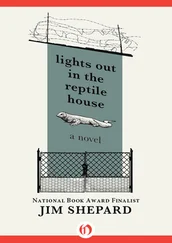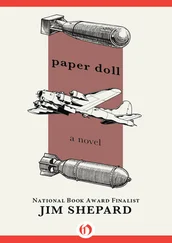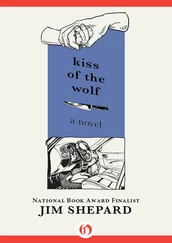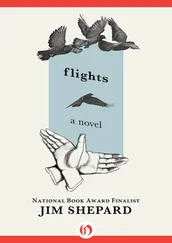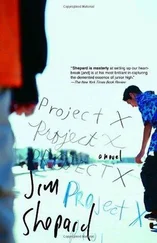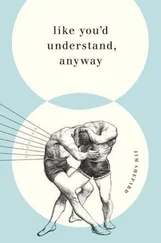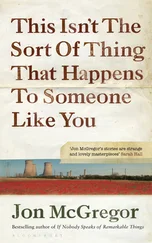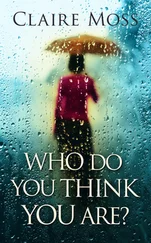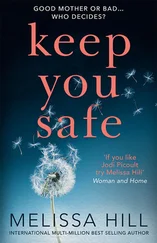She had a miscarriage and felt like I wasn’t entirely on board for the stunned-by-grief thing. She’s also been blindsided by my refusal to try again.
The overarching lesson from science in the last century, I tell her, is that my experience isn’t going to help all that much, not in terms of providing a guide to yours .
It’s like when she heard me sparring with an old friend who’s a string theorist about how some of the follow-up discoveries about the likelihood of the Higgs field were redefining the meaning of empty. She’d snorted. “What was that ?” the string theorist asked, long-distance from Berkeley.
They think this is even bigger for them than it is for us. This gives what they do the chance to make contact with observable physics and become an experimental science. If strings are as large as some of them think — a billionth of a billionth of a meter — that’s within reach of the LHC, and we’ll see new particles whose masses line up like harmonics in a choral piece. We’ll all be notes from a universal melody, patterns from the same object: a string. These people will go nuts with joy. As he puts it, they’ll hear the shrieks over in the humanities buildings.
Every time you turn a corner, something gets defamiliarized. This is the elevator that’s going to take us to the next floor. Some of those nuts that have been too hard to crack are about to get pried open. “What are you really looking for?” my wife said to me, last thing, before I left. What we’re all looking for. That saving thing, I think: something that right now is beyond our ability to even imagine.
Gojira, King of the Monsters
Once again he weathered an afternoon of unease and little progress. He’d forgotten that today was the Star Festival, one of his wife’s favorites, and was beginning to wonder at which he was more adept: hurting Masano inadvertently or intentionally. He’d settled into the backseat that morning and spread onto his lap his section of the production board, glued on heavy stock and color-coded, when the driver had reminded him about the festival. The driver had noticed the paper cows and kimonos Masano had hung in their potted bamboo out front. They had to have been there when Tsuburaya had come home the night before.
The driver at that point had already turned onto the main street and Tsuburaya had considered asking to be returned to his home, but then had finally said, “Oh, keep going.” Immediately he’d understood how that compounded his offense. He imagined himself telling Masano, “I forgot. And when I remembered, I kept going anyway.”
She had signed the first love note she’d ever sent to him “Shokujo,” the name of the Weaver Princess Star, the central figure of the festival. It had been a reference to the extent to which their discipline for work had suffered in the face of their feelings. According to the legend, the princess had fallen in love with a cow-herder; and as a reward for their diligence and industry, the king had allowed them to marry, but their lovemaking had become for them such a delirium that she had neglected her weaving, and the herder had allowed his cows to stray, so in his exasperation the king had forced them to remain on opposite sides of the Milky Way, to approach each other only once a year. Every July Masano had celebrated the festival, in recent years more and more often with only Akira, their youngest child. The previous July, while Tsuburaya had looked on, she had shown Akira through his toy telescope how on this night and this night alone the Weaver Princess Star and the Herdboy Star were allowed to meet on the banks of the river of heaven. Tsuburaya had watched as if she were having this conversation with her son in order to have it with him. And if it rained? Akira had asked. If it rained, his mother told him, the two stars had to wait an additional year.
He was falling behind everywhere: in his wife’s affections and his work’s responsibilities. But in the case of the latter, whether he put in fourteen- or sixteen-hour days, each evening left his production team with still more to accomplish, with principal photography set to commence one way or the other on August first.
He told his staff whenever they protested that there was no sense in blaming Tanaka, since he hadn’t misled anyone. “Well, then he’s the first producer who hasn’t,” one of his assistants grumbled. But it was true, Tsuburaya reminded them: at the meeting at which Tsuburaya had agreed to come aboard, Tanaka had begun by saying, “The good news is: do you want to make this movie with me, or not? The bad news is, we won’t have enough time.”
Tanaka had a huge hit with Eagles of the Pacific a year earlier, in 1953, but only bad luck since. Two projects collapsed when rights he’d thought were in hand turned out to be too expensive, and the most recent production had been all set to go until the Indonesian government panicked in the face of all the anti-Japanese protests and canceled the cast and crew’s visas. Tanaka said he spent the flight back from Jakarta bathed in his own sweat. Toho, poised to regain its market leadership, had seen its hottest young producer allow its biggest project of the year to blow up in his face. He’d telephoned from the Jakarta airport to ask Mori, the executive production manager, how soon he’d need to come up with a replacement for that spot in the production slate, and Mori had answered that he’d better have one by the time he landed. He spent the flight peering miserably out his window at the endless ocean and found his mind wandering to Lucky Dragon No. 5 . He claimed he’d been so animated when his big idea hit him that the woman beside him had been startled out of her sleep.
In March the Americans had detonated a fifteen-megaton hydrogen weapon over Bikini atoll in the central Pacific, and Lucky Dragon No. 5 was one of those little trawlers out for tuna that found itself inside the test zone. They’d been where they were supposed to be but the detonation was twice as large as predicted. They reported seeing the sun rise in the west and then being covered by a powdery white ash for the hour that it took them to retrieve their nets. Back in port it was determined that all twenty-three crew members and their entire haul had been heavily contaminated. And it turned out that the radioactive tuna had entered the Japanese market from other trawlers before the contamination was discovered, and the result was months of nuclear fear and anti-American hostility. Tabloids had called it the Americans’ third atomic attack on Japan.
The year before Tsuburaya had forced Tanaka to go to see his beloved King Kong , which had just earned four times as much in its worldwide rerelease as it had originally, and Tanaka had also been impressed by the global numbers for Warner Bros.’ The Beast from 20,000 Fathoms , the story of a dinosaur thawed from its hibernation by American nuclear testing in Baffin Bay.
The United States government estimated that 856 ships in the Japanese fishing fleet had been exposed to radiation, and that more than five hundred tons of fish had to be destroyed, and offered a settlement for the survivors that the Japanese government declined to accept. And Tanaka recounted that it struck him as he looked out over the Pacific below that the stories could be combined; and for the rest of the flight he scribbled on the back of a folder that his seatmate had lent him the outline of a story in which a prehistoric creature was awakened by an H-bomb test in the Pacific and then went on to destroy Tokyo.
When Tsuburaya finally returned home for dinner on the night of the Star Festival, Masano served soba noodles and mashed fish. While he ate, she was sober and quiet. He mentioned again by way of conversation a cough that wouldn’t go away and she prepared for him without comment what she called her broth of the seven plants, which included shepherd’s purse, chickweed, parsley, cottonweed, and radish. She sat with him while he drank it and, once he finished, told him he should smoke less.
Читать дальше

